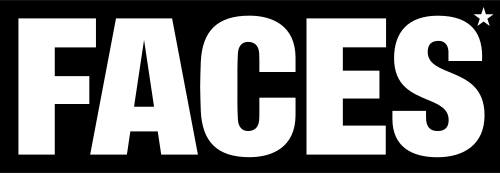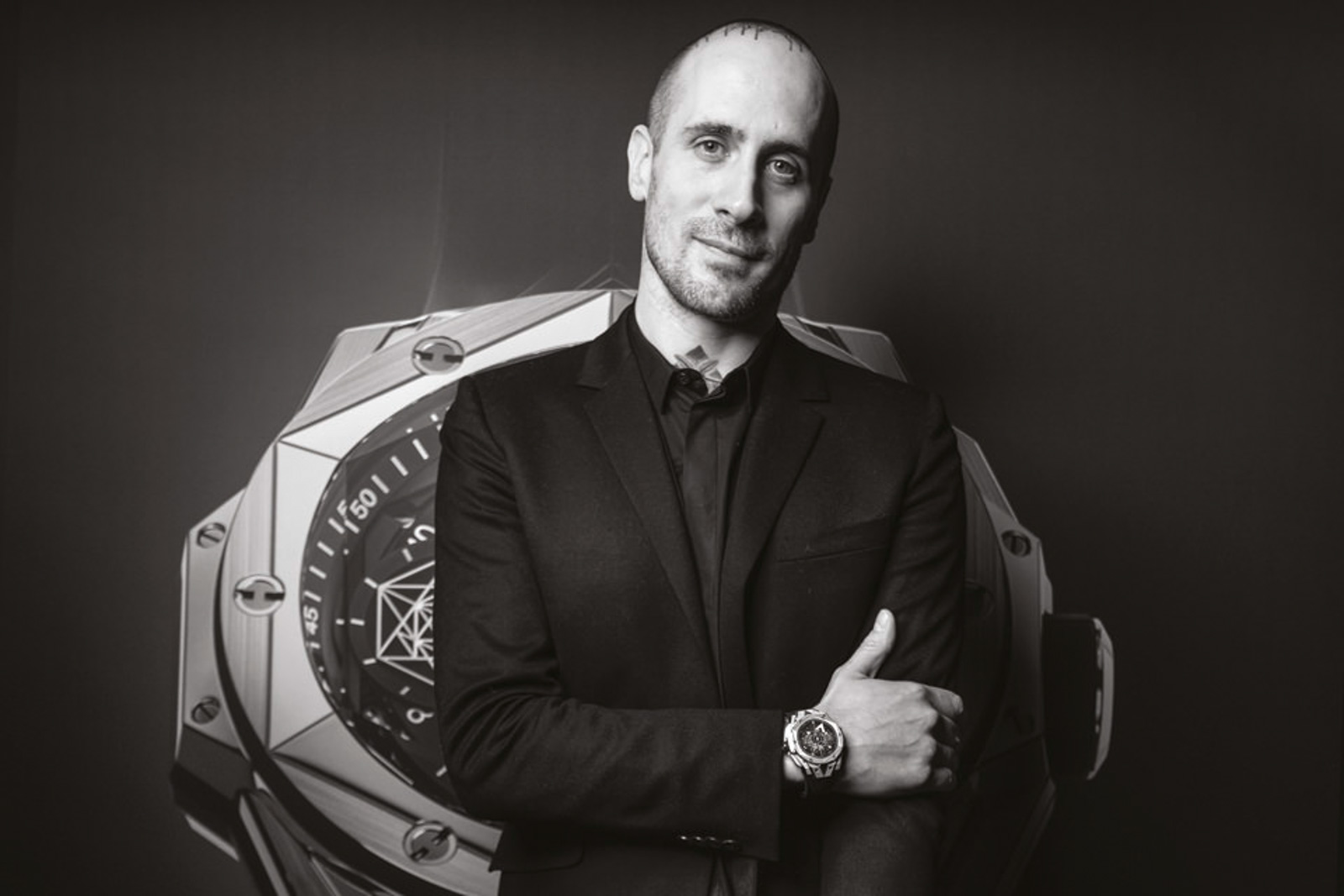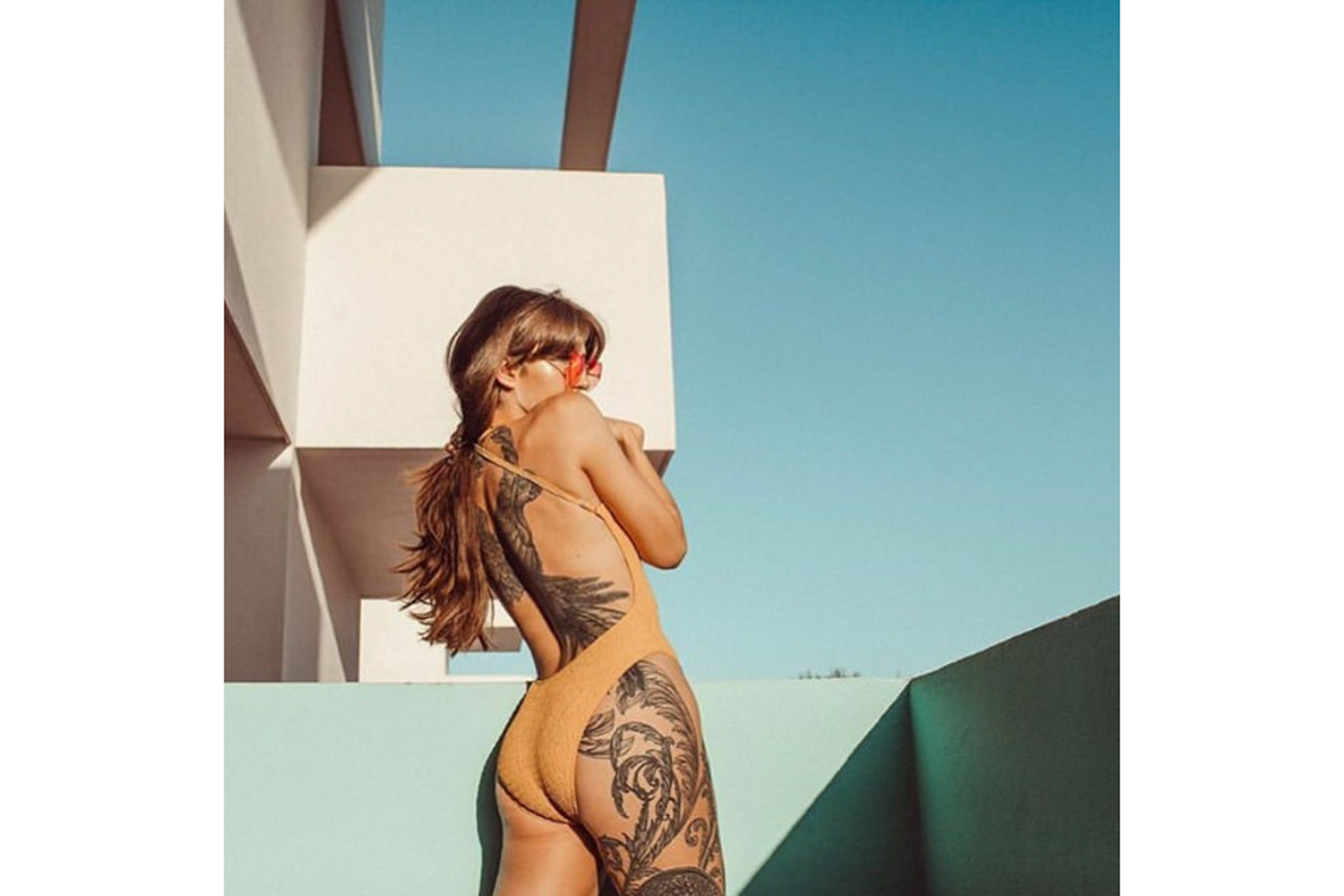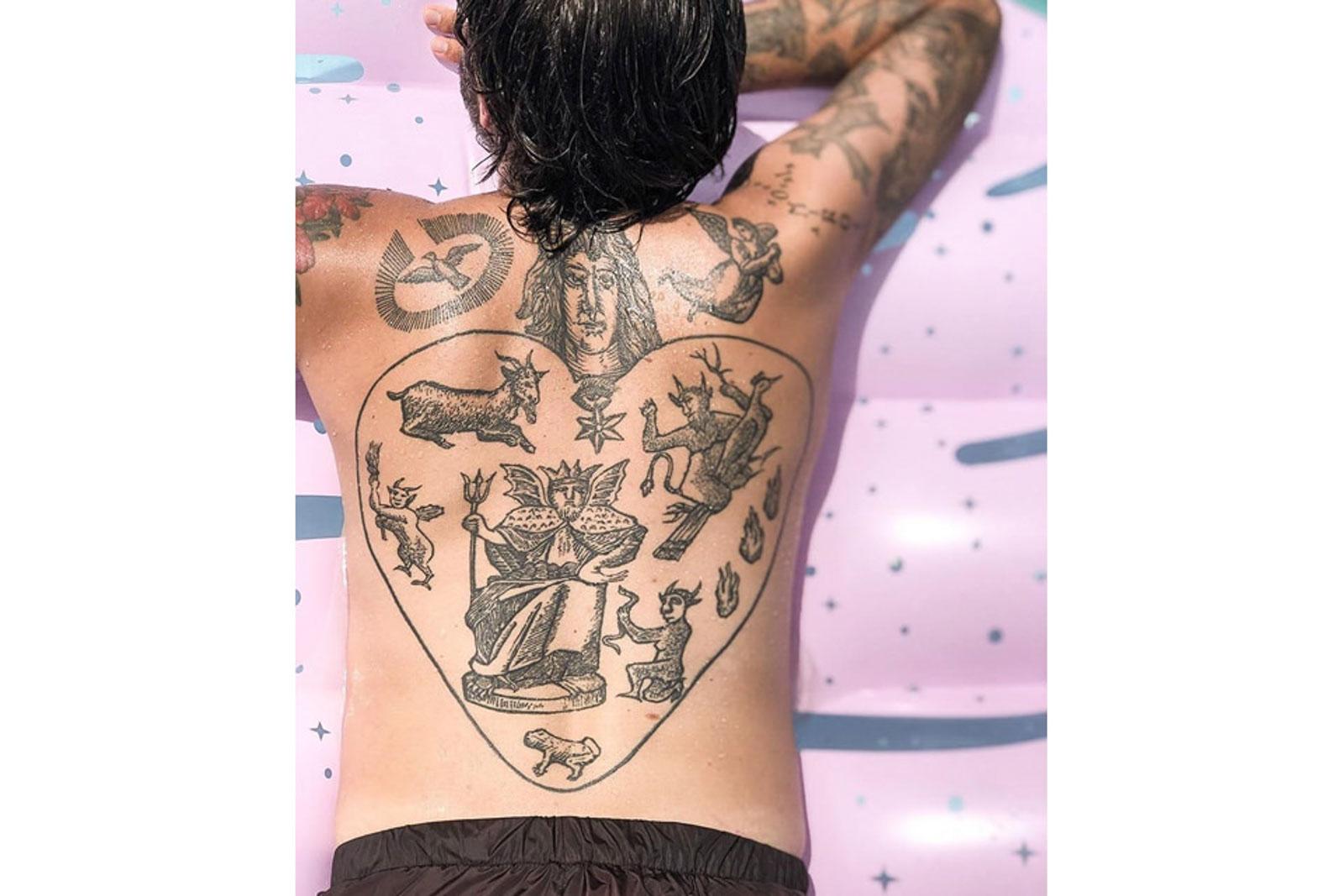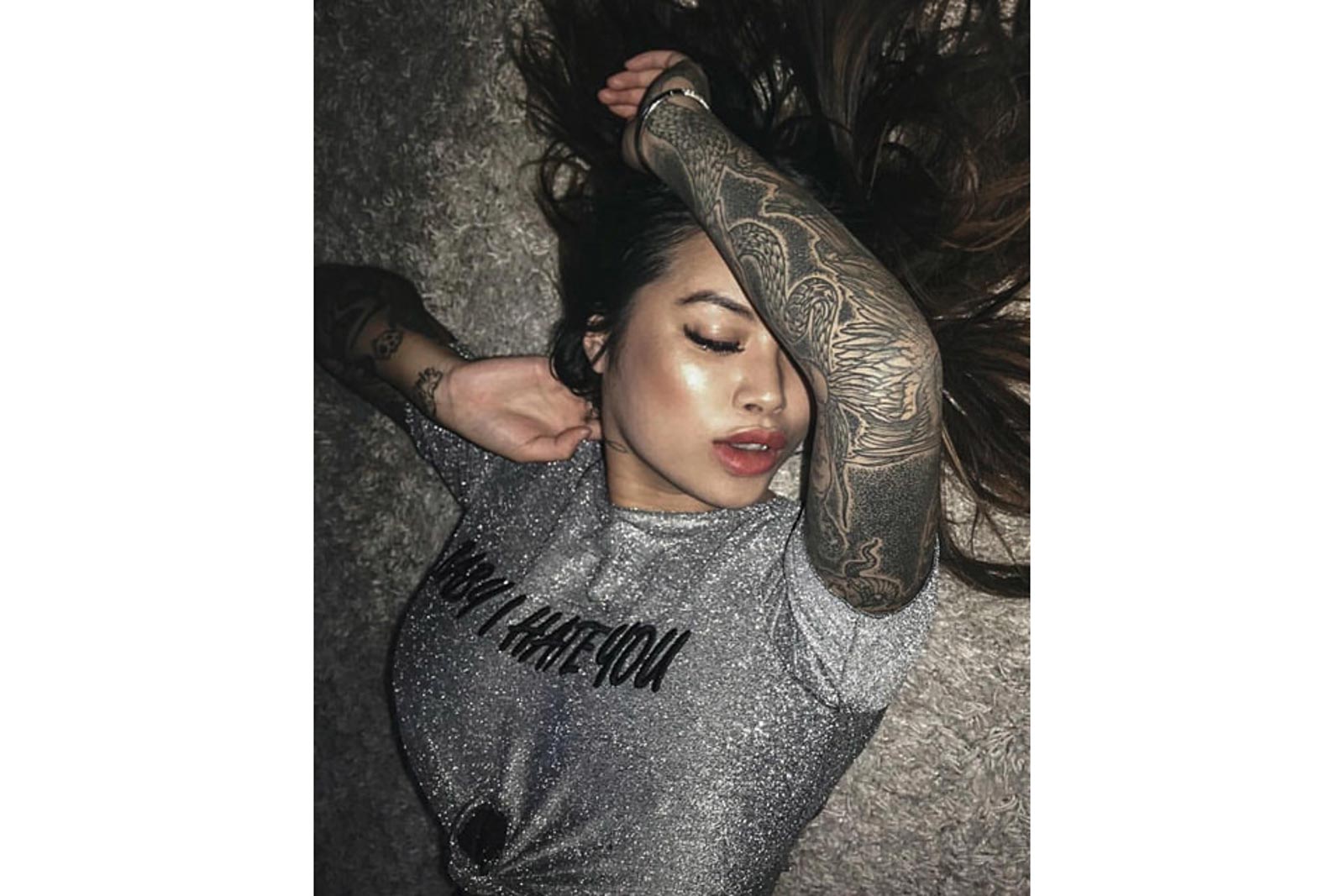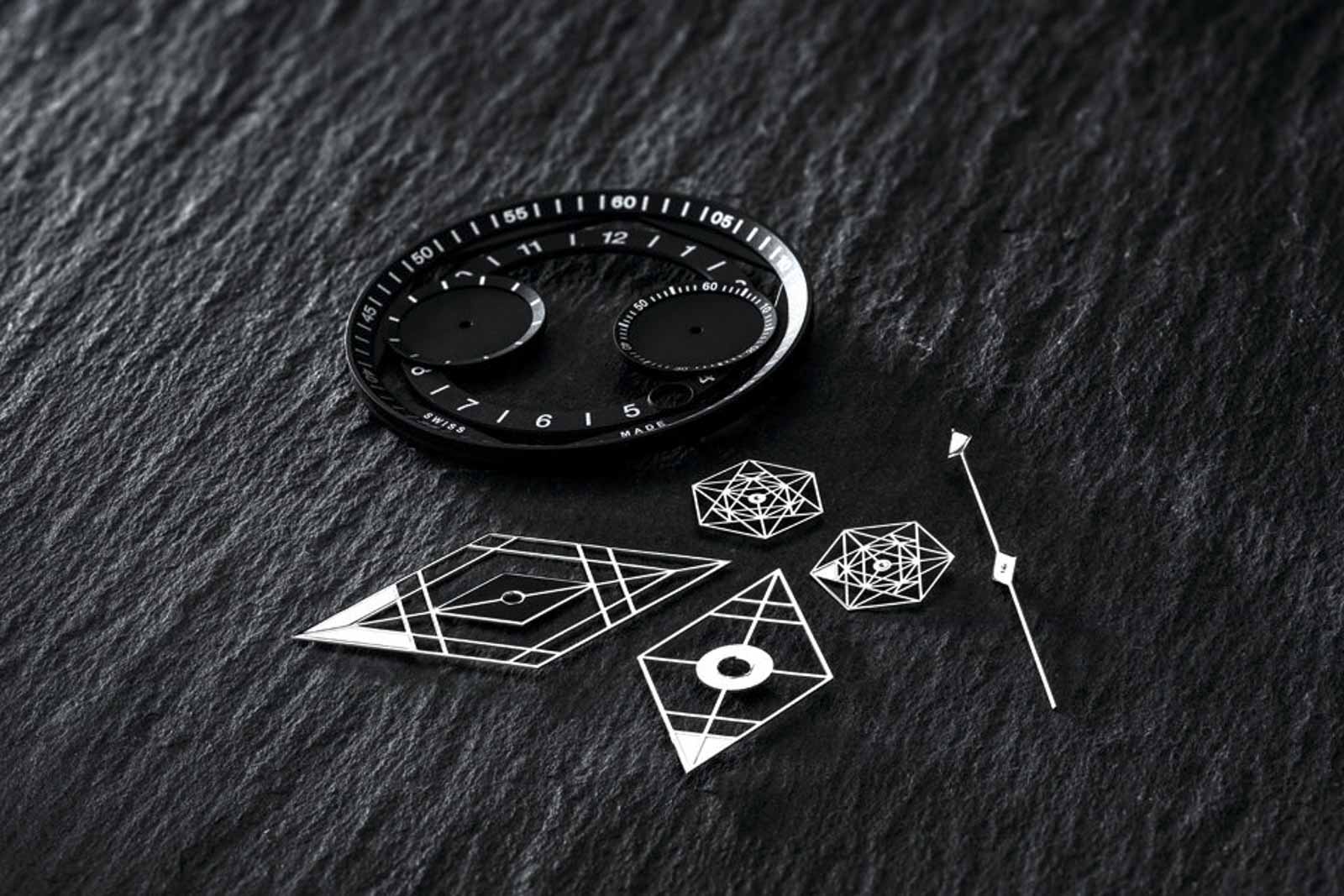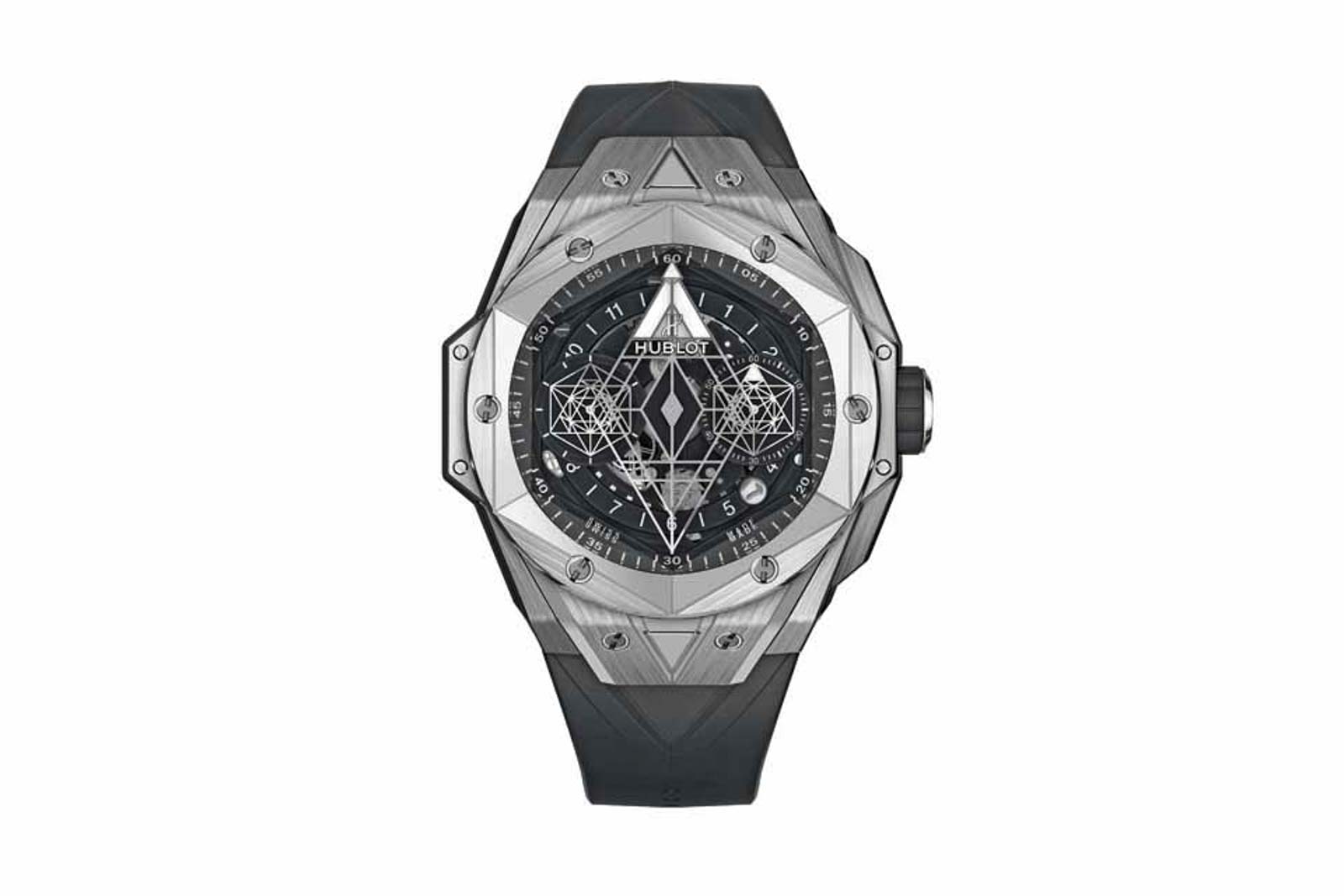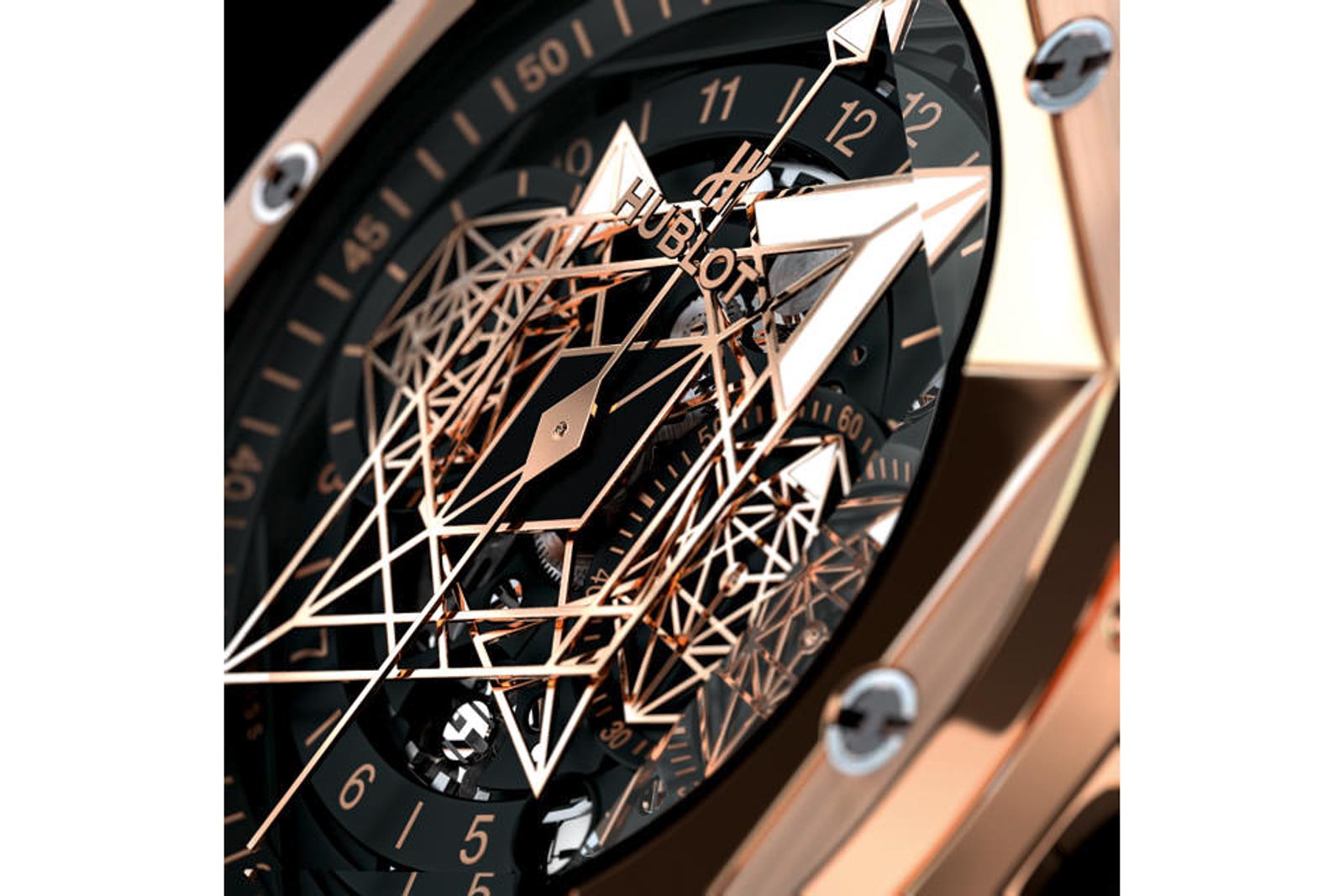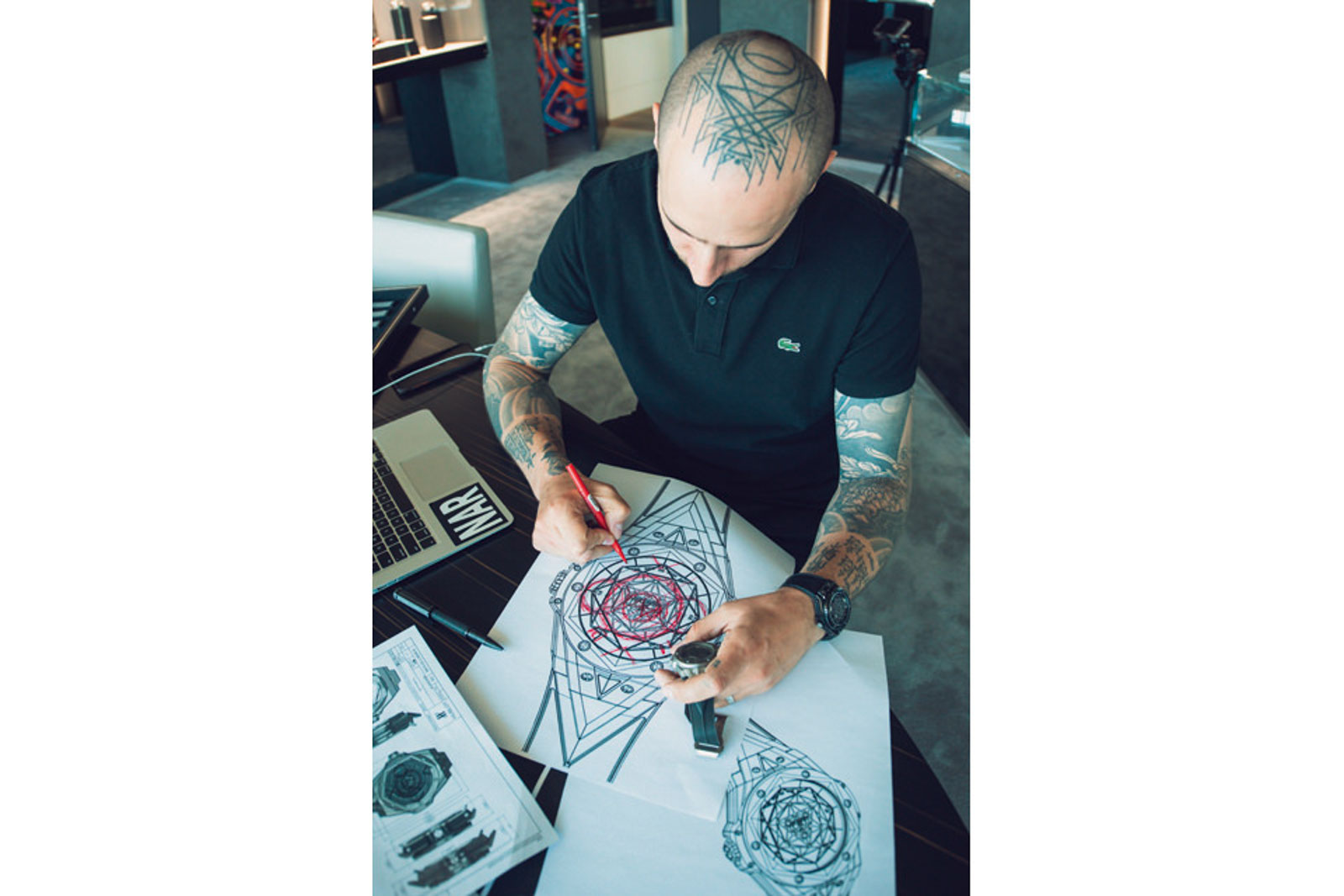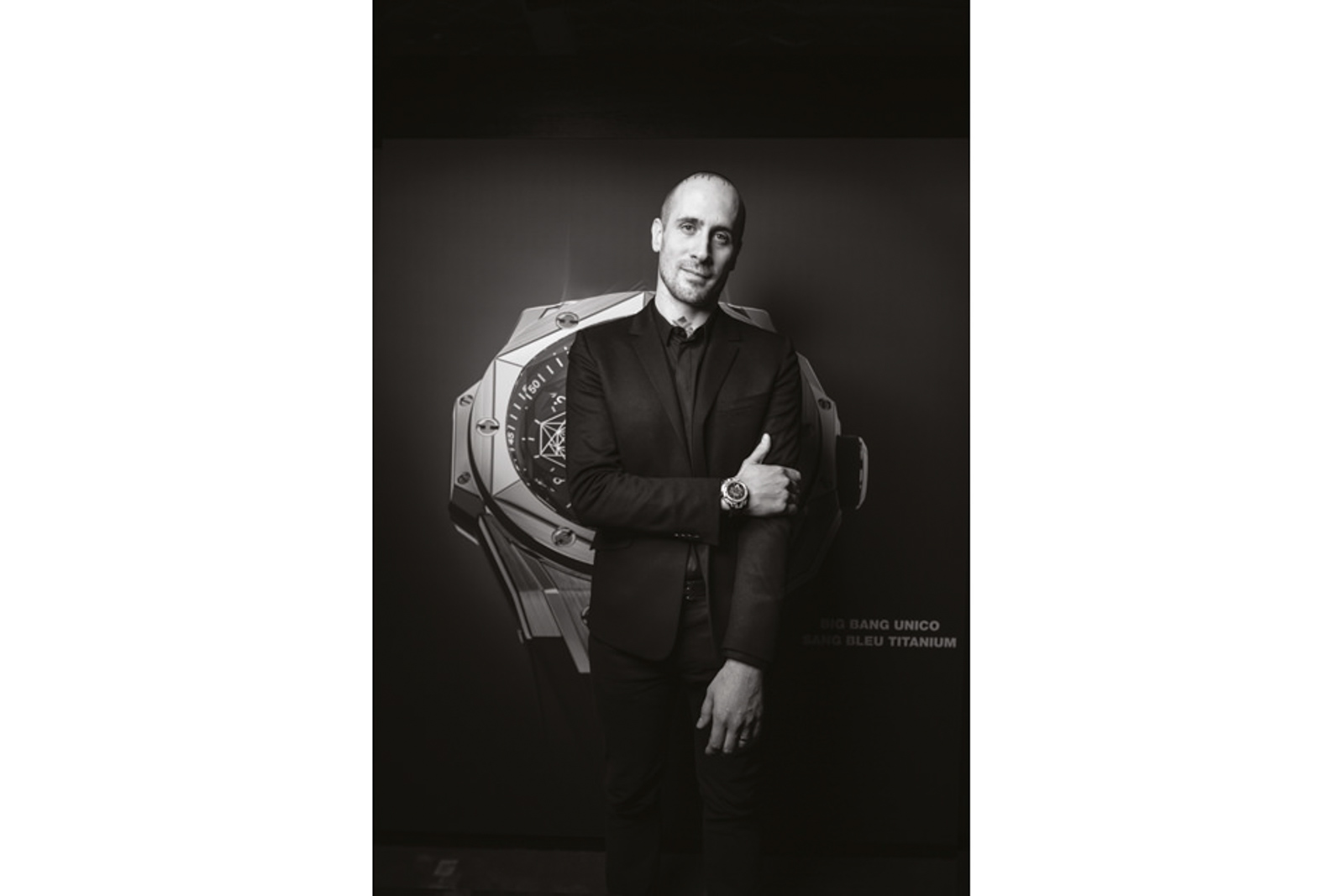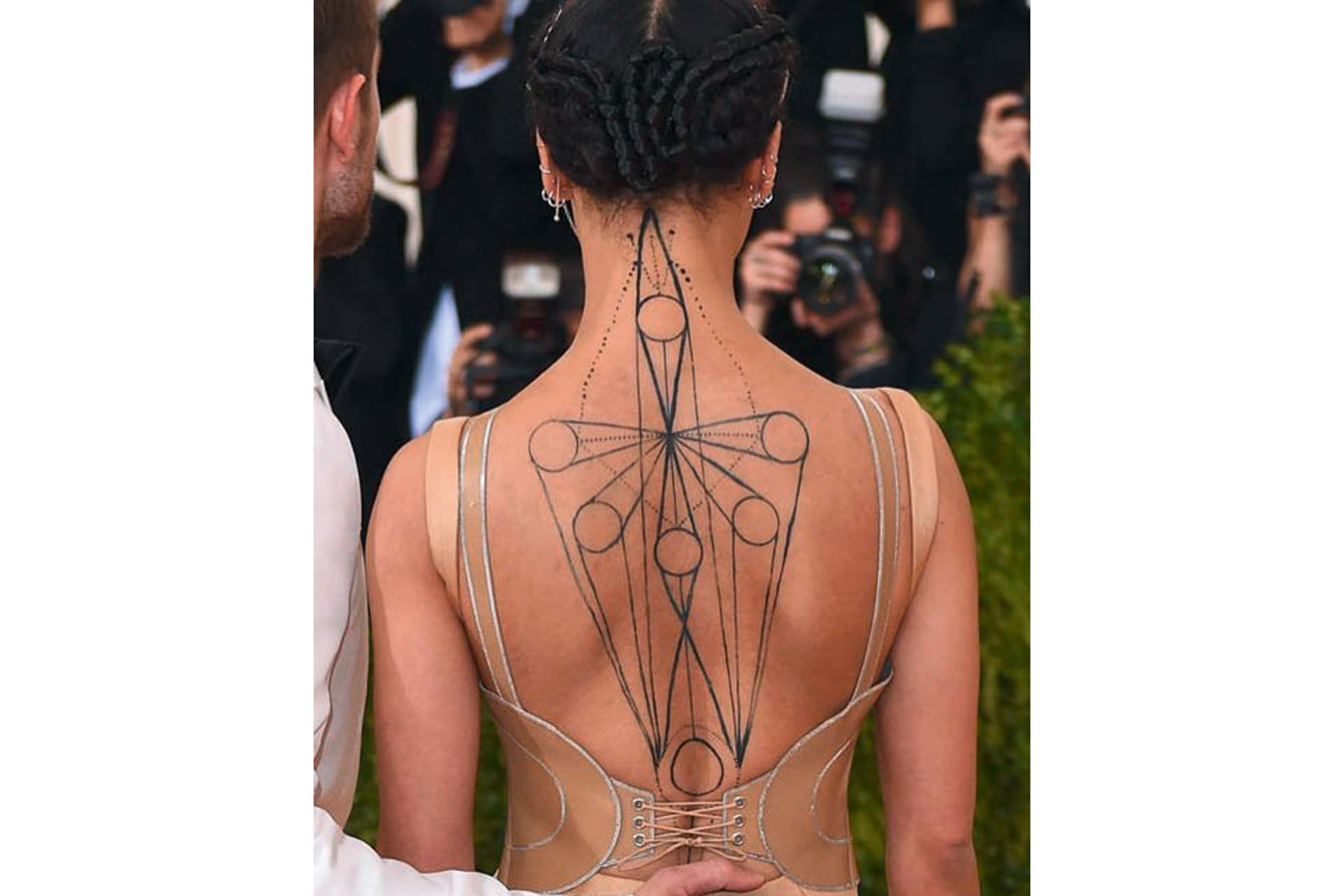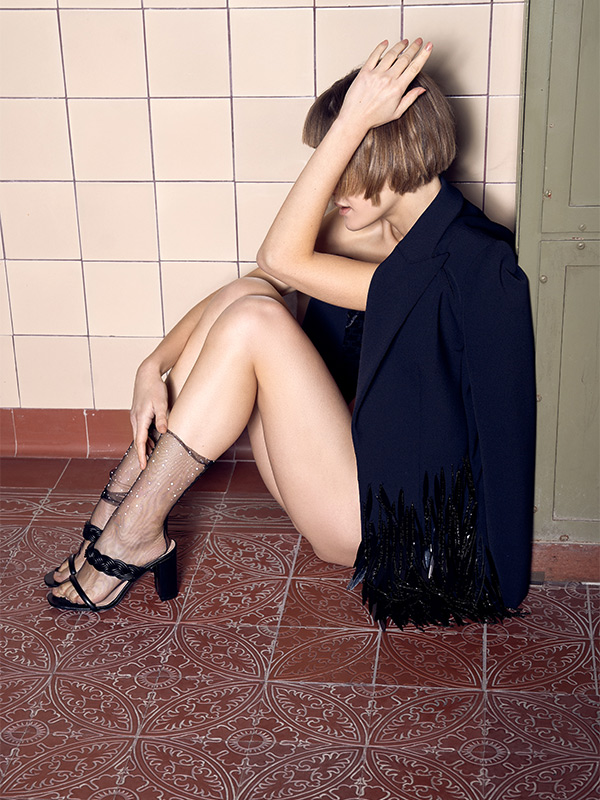The engraver
Ink is his business: Maxime Plescia-Buchi puts something under people’s skin that will stay with them forever. The Swiss tattoo artist always has several irons in the fire – his own studios Sang Bleu in Zurich, L.A. and London, for example, or his collaboration with the watch manufacturer Hublot.
FACES: Who would you refuse to tattoo on?
Maxime Plescia-Buchi: Anyone who is not 100 percent committed to this process.
F: Do you see tattoos as a fashion accessory or as a statement?
MPB: Neither and both. Tattoos can be whatever you need them to be.
F: What design would you like to put on a body?
MPB: I’m not interested in a particular tattoo or design, but in the person who wants it from me.
F: Is it allowed to cry during tattooing?
MPB: As long as you don’t fidget too much, you can do whatever you want.
F: When do you cry yourself?
MPB: Often when I’m flying and isolated from everything else. I cry because life is so incredibly overwhelming and not because of pain.
F: Do you think too many people are tattooed?
MPB: No, not at all.
F: How do you recognize a good tattoo artist?
MPB: A good tattoo artist is prepared to give everything for a tattoo.
F: You designed watches for Hublot. What brings a tattoo artist and a watch manufacturer together?
MPB: The approach to a product is the same for both parties: whether watches or tattoos – both are timeless and last for a very long time. Tattoos are very much in tune with the world right now, while the watch industry hovers above it. Together, they create the right balance between the current and the
General.
F: Everyone has a smartphone. Why do we still use clocks to tell the time?
MPB: Everyone has a TV, but we still listen to the radio. We all have a car and yet we also walk.
F: You have been working with Hublot for several years now. What do you admire about Hublot bosses Jean-Claude Biver and Ricardo Guadalupe, and what do you learn from them?
MPB: Working side by side with these people is like a training course in management and business leadership for me. The most important thing I have learned is to make your own company big without losing your vision and soul.
F: You own tattoo studios in Zurich, Los Angeles and London. What is better in London and L.A. than in Zurich?
MPB: There are points for and against all locations. That is fascinating. And there are so many of them that I am not able to list them here .
F: Are tattoo artists artists or craftsmen?
MPB: Neither. Tattooing is something unique that combines aspects from both professions.
Q: What do you think about people who don’t have a single tattoo?
MPB: I hope that’s what they want. Not having a tattoo can be just as much of a statement as having lots of tattoos.
F: Have tattoos become mainstream?
MPB: That depends on your understanding of mainstream. I would say tattoos have been democratized.
F: How much should a good tattoo cost?
MPB: As much as someone is prepared to spend on it.
F: Tattoos that you engrave on other people are works of art that you will never see again. Are you always giving away a piece of yourself?
MPB: In a way, yes. But I hold on to the beauty of this circumstance – it is like the Tibetan mandalas Dultson-Kyil-Khor.
F: Many people have really bad tattoos. What did they do wrong?
MPB: My own judgment is irrelevant. If they are happy, it’s a good tattoo.
F: Where does a tattoo hurt the most?
MPB: It varies from person to person. For me it was the lower stomach.
F: What music do you listen to when you tattoo someone?
MPB: A lot of soundtracks from movies. Otherwise also rap, new wave and industrial, R’n’B or electro. My spectrum is extremely broad.
F: How do you explain your tattoos to your children?
MPB: I believe that my children understand my tattoos even without an explanation. But I will of course answer all your questions, should you have any, at .
F: What are the most important things you want to pass on to your children?
MPB: Love, self-worth and health.
F: Your whole body is full of tattoos – but not your face. A taboo zone?
MPB: Not really. It’s about what you feel comfortable with. I won’t be getting any more tattoos. That time in my life is over.
F: Would you like to have more space on your body for new tattoos, or would you want to swap old ones for new ones?
MPB: If I could, I might do it. (laughs)
F: What do other people give you too little credit for?
MPB: People don’t give you credit for the things you don’t expect credit for – but they do when you really deserve it.
F: What prejudice about tattoos and tattooed people annoys you the most?
MPB: I am not aware of any prejudices.
F: Where do you meet your friends when you are in Zurich?
MPB: In my studio.
F: When do you get annoyed with Switzerland?
MPB: I find it strange that the Swiss are extremely thorough with certain things and completely amateurish with others. Getting a tattoo, for example, is one of those things. Many of my clients would rather be tattooed by a mediocre tattoo artist than wait for the right tattoo artist for the right design. This is an attitude that can be applied to so many other areas of life. This behavior not only alienates me, it also disappoints me greatly.
F: What are you afraid of?
MPB: Anything that could spoil my children’s happiness.
“I won’t be getting any more tattoos. That time in my life is over.”
The Story: Hublot
Gold and rubber. Two materials that couldn’t be more different. The fusion of the two has made the Swiss watch label Hublot great. In 1980, the company launched its “Art of Fusion” and watches inspired by the porthole of boats. In French: Hublot. In 2004, Jean-Claude Biver joins the board of and steers the label to success. The CEO, who sometimes speaks at the WEF directly after former US President Bill Clinton, has received several awards for his commitment, ambition and the resulting success. “CEO of the Year”, “Leader of the Year” and “Hommage à la Passion” are just a few of the titles that the Swiss watchmaking pope is proud to wear on his chest. At Hublot, one of his biggest coups: the Big Bang watch model, a chronograph launched in 2005, which won various design awards with its six screws and striking corners. In 2008, the luxury company LVMH took the Swiss watch label under its wing, and just one year later Hublot moved to Geneva, where the 6,000 square meter manufactory has been located ever since. After the Big Bang, other collections such as the King Power, the Classic Fusion and the MP are also created here. Hublot is constantly developing its unique selling point – the fusion of materials – : scratch-resistant Magic Gold (realized in 2011 in collaboration with the Swiss Federal Institute of Technology Lausanne) or colourful ceramic (launched in 2013 with a bright red model) have long since turned the watches into statements. The brand also manages to position itself as the official timepiece of the Football World Cup. This may be due not least to the prominent ambassadors: Usain Bolt, the soccer clubs Bayern Munich, Paris Saint- Germain, Ajax Amsterdam or Juventus Turin, the professional skiers Maria Riesch and Dario Cologna or the family of the late Formula 1 racing driver Ayrton Senna. But that’s not all: in 2012, Jean-Claude Biver launched Hublot TV, the first online television channel from a watch brand. Today, watches from Hublot are available in over 70 boutiques around the world.
